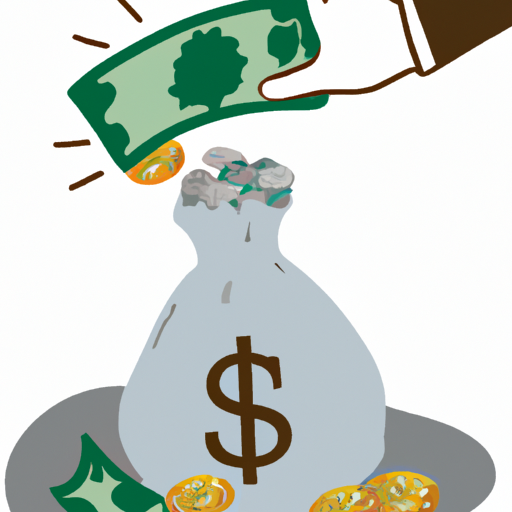Overview of the 2023 IRS Tax Refund Schedule
The 2023 IRS tax refund schedule is now available, and taxpayers can find out when to expect their return and when they can expect to receive their refund. With the start of the new tax season, the IRS has released the updated refund schedule for the upcoming year. This schedule outlines the timeline for when refunds will be issued and when taxpayers can expect to receive their return.
The 2023 IRS tax refund schedule follows the same general guidelines as previous years. The IRS will begin accepting and processing tax returns on January 15, 2023 and the deadline to file taxes is April 15, 2023. Taxpayers who file their taxes electronically typically receive their refund within 21 days of the return being accepted. For taxpayers who file by mail, the refund is typically issued within 6 to 8 weeks.
Knowing the estimated timeline of when to expect your refund can help provide some peace of mind and also assist in planning for the upcoming year. The IRS encourages taxpayers to file electronically to reduce the risk of error and increase the speed of their refund. Additionally, taxpayers can easily track their refund status by using the IRS’s “Where’s My Refund” tool. This tool is available on the IRS website and can provide taxpayers with an estimated date of when they can expect to receive their refund.
When filing taxes, it’s important to note that the 2023 IRS tax refund schedule is subject to change due to various factors. Taxpayers who are due a refund should not count on receiving it by a certain date and should remain patient as the IRS processes their return. There is also the possibility that the refund amount could be different than originally estimated.
The 2023 IRS tax refund schedule has been released and taxpayers can now plan accordingly when it comes to filing their taxes and receiving their refund. Knowing the estimated timeline of when to expect their refund can help provide some peace of mind and assist in planning for the upcoming year. Taxpayers should also note that the refund schedule is subject to change and that the refund amount may vary from what is initially estimated.

What Taxpayers Should Know about the 2023 Refund Schedule
Tax season is right around the corner, and that means it’s time to start preparing for the 2023 IRS tax refund schedule and when to expect your return. As taxpayers prepare for filing taxes, there are a few key points that they should keep in mind.
First, it’s important to understand the timeline for when the IRS will start accepting tax returns. The IRS typically begins accepting returns on January 1st each year. However, due to the pandemic, the IRS has extended the start date for the 2023 tax season to February 1st. This gives taxpayers more time to organize their documents and prepare for filing.
Second, it’s important to understand the timeline for when to expect a refund. Generally speaking, the IRS typically issues most refunds within 21 days after they receive your return. It’s important to keep in mind that if you are claiming certain credits or deductions, your refund could take longer to process. The IRS also issues refunds in two installments if you claim the Earned Income Tax Credit or the Additional Child Tax Credit.
Third, it’s important to know when to expect your return if you e-file. If you e-file your return, you should receive your refund much sooner than if you file a paper return. The IRS typically processes e-filed returns within 21 days of receipt. However, if you are claiming certain credits or deductions, your return could take longer to process.
Finally, it’s important to remember to double-check your return for accuracy. If you make a mistake on your return, it could delay the processing of your refund. It’s important to review your return carefully before submitting it to the IRS.
Taxpayers should take the time to educate themselves on the 2023 IRS tax refund schedule and when to expect their return. Being aware of the timeline for filing taxes, when to expect a refund, and when you should receive your return if you e-file, can help taxpayers prepare for filing and avoid any potential delays. It’s also important to remember to double-check your return for accuracy before submitting it to the IRS. With these tips in mind, taxpayers can confidently prepare for the 2023 tax season.

Changes to the 2023 Tax Year
The 2023 tax year is sure to bring changes to the IRS tax refund schedule. Since the tax laws are constantly changing, it is important to stay informed on the current tax regulations. The 2023 tax year will bring a few changes to the way that taxpayers claim their tax refund.
One of the most significant changes for the 2023 tax year is the elimination of the Earned Income Tax Credit (EITC). This program was designed to help low-income families receive a tax refund. However, due to the changing tax laws, the EITC has been eliminated for the 2023 tax year.
Additionally, the 2023 tax year will bring changes to the way that taxpayers receive their tax refund. Under the new rules, taxpayers will receive their refund in two stages. The first stage will be the direct deposit of the refund into the taxpayer’s bank account. This direct deposit will occur within 14 days after the return is filed. The second stage of the refund will be the paper check mailed to the taxpayer. This check will be sent out within 21 days after the return is filed.
Another change for the 2023 tax year involves the way that taxpayers file their tax return. Starting with the 2023 tax year, taxpayers will be required to file their tax return electronically. This means that taxpayers will be able to file their return from home using a computer, smartphone, or tablet. This will make filing taxes easier and more convenient for taxpayers.
The 2023 tax year will also bring changes to the way that taxpayers claim deductions and credits. Under the new tax laws, certain deductions and credits will no longer be available to taxpayers. This includes deductions for home equity loans, student loan interest, and medical expenses. It is important for taxpayers to understand the changes to the deductions and credits in order to maximize their tax refund.
Finally, the 2023 Tax Year will bring changes to the way that taxpayers can receive their tax refund. In addition to direct deposit, taxpayers will now have the option to receive their refund via a prepaid debit card. This will allow taxpayers to have access to their refund money immediately, without having to wait for a paper check.
Overall, the 2023 tax year will bring some big changes to the IRS tax refund schedule. It is important for taxpayers to understand the changes to the deductions and credits, as well as the changes to the way that refunds are received. By staying informed on the current tax laws, taxpayers can maximize their tax refund and ensure that they receive their money as quickly as possible.

Timeline for Receiving Your Refund
It’s that time of year again – tax season is upon us! As we all prepare our returns and plan for the future, it’s important to know the IRS Tax Refund Schedule so that we can plan accordingly and maximize our refunds. While the exact timeline for receiving your refund can vary depending on several factors, understanding the general timeline can help you plan for the year ahead.
The first step to understanding the timeline for receiving your refund is to know when your return will be accepted by the IRS. Generally, the IRS accepts returns starting in mid-January and continues to accept returns through mid-April. If you file your return electronically, it may be accepted as soon as the same day. If you mail your return, it can take up to six weeks for your return to be processed and accepted.
Once your return is accepted, the IRS will typically process your refund within 21 days. If you filed your taxes electronically and opted for direct deposit, you should receive your refund within two to three weeks of your return being accepted. If you chose to have your refund mailed to you, it can take up to six weeks for you to receive your refund check.
For taxpayers who are expecting a refund and want to track the status of their return, the IRS provides an online tool called “Where’s My Refund?” This tool allows taxpayers to check the status of their return and when their refund is expected to arrive. It can also be used to check whether your refund was applied to any outstanding debts you may have with the IRS.
Taxpayers who are expecting a refund may also be eligible for the Earned Income Tax Credit (EITC). This is a refundable credit for lower-income taxpayers who are eligible for the credit. The EITC can increase the size of your refund, so it’s important to be aware of the eligibility requirements and apply for the credit if you qualify.
Finally, it’s important to remember that the IRS Tax Refund Schedule can vary depending on the individual and the types of returns filed. If you are expecting a refund and want to ensure that it arrives as soon as possible, it’s important to file your return as early as possible. Additionally, make sure to double-check your return for accuracy to ensure that there are no errors that could delay your refund.
By understanding the timeline for receiving your refund, you can plan ahead and make sure that you get your refund as soon as possible. With the right planning and preparation, you can maximize your refund and get the most out of your return.

Factors that Affect Your Refund Amount
You’ve filed your taxes and are eagerly awaiting your refund. Knowing the 2023 IRS Tax Refund Schedule and when to expect your return can make all the difference in how you plan your finances. To help you get the most out of your refund and maximize the impact, we’d like to discuss some of the factors that can affect your refund amount.
The most important factor that affects your refund amount is the accuracy of your filing. If you make mistakes on your return, such as incorrect information or incorrect filing status, you could find yourself owing the IRS more money or receiving a smaller refund. Additionally, if you’re claiming any deductions or credits, make sure you’re using all the right ones and that you have the right documentation to support them.
Your refund amount may also be affected by whether or not you’ve had taxes withheld from your wages. If you have taxes withheld, your refund amount will be smaller than if you didn’t have any taxes withheld. If you haven’t had taxes withheld, you may end up owing the IRS money.
Additionally, if you’ve recently changed jobs or have multiple jobs, your refund amount could be affected. This is because different employers have different filing statuses, and this can affect the amount of taxes that were withheld from your paycheck. Additionally, if you’re eligible for certain credits or deductions, having multiple jobs may make you eligible for different ones than if you only had one job.
Finally, if you’re filing jointly with your spouse, your refund amount could be affected depending on their income and filing status. For example, if their income is higher than yours, their tax rate may be higher and this can reduce your refund amount. Similarly, if your spouse is claiming certain deductions or credits, this could affect your refund amount.
Understanding the factors that can affect your refund amount is essential to getting the most out of your tax return. Knowing the 2023 IRS Tax Refund Schedule and when to expect your return can also help you plan your finances in the most efficient way possible. With the right information and preparation, you can make sure your refund is maximized and that you get the most out of your tax return.

Filing Early and Getting Your Refund Quicker
It’s never too early to start thinking about your 2023 taxes and how to get the most out of your refund. If you want to get your tax refund as quickly as possible, filing early is the way to go. In 2023, the IRS will begin accepting tax returns on January 4th and the deadline to file is April 15th. By filing early, you can get your refund more quickly and start making plans for how you’ll use it.
There are several benefits of filing your taxes early in 2023. First, you’ll get your refund quicker. Typically, if you file early, you can receive your refund in as little as 8 to 15 days. This is much faster than if you wait until the last minute to file. Additionally, filing early can help you avoid problems with the IRS. If you wait until the last minute to file, you run the risk of missing the deadline or filing incorrectly.
When it comes to getting your refund quickly, the best way to do it is to file your taxes electronically. You can use tax filing software like Turbo Tax or H&R Block to help you file your taxes quickly and accurately. You can also use the IRS Free File Program if your income is below a certain level. Filing electronically is the fastest way to get your refund and the IRS typically issues refunds within 8 to 15 days of filing.
Overall, filing your taxes early is the best way to get your refund quickly. By filing in January or February, you can get your refund in as little as 8 to 15 days. Filing electronically is the best way to get your refund quickly and accurately. Plus, you’ll avoid the stress and anxiety of waiting until the last minute to file. So start planning now and get your taxes done early in 2023!

Tips for Making Sure Your Refund is Accurate and Timely
As the 2023 tax season draws closer, it is important to understand the IRS refund schedule and how to make sure your refund is accurate and timely. Filing taxes is an important part of life and getting the right refund can be a huge help with finances. With the right tips and tricks, you can ensure that your refund is accurate and timely.
First, make sure to file your taxes early. The IRS generally processes returns in the order they are received, so make sure to submit your return as soon as you can. This will help ensure that your refund is processed as quickly as possible. Additionally, make sure that all of your information is accurate and complete. The IRS has multiple checks in place to make sure all of the information is correct, so double-check all of the information before submitting your return to avoid any delays in processing.
Next, consider electronically filing your return. This is the fastest way to get your refund and will help ensure the accuracy of your return. The IRS will process your return faster when it is filed electronically, and it also reduces the risk of mistakes. Additionally, make sure to choose direct deposit for your refund. This is the quickest way to get your refund, and is also the most secure.
Finally, make sure to keep track of your refund status. The IRS offers a “Where’s My Refund” tool that allows you to track the progress of your return. This can help you identify any potential delays or problems with your return. Additionally, you can use the tool to check the estimated time of your refund.
Overall, understanding the 2023 IRS refund schedule and taking these steps can help you ensure that your refund is accurate and timely. Filing taxes can be a hassle, but with the right tips and tricks, you can make sure that your refund is processed quickly and accurately.

Common Questions about the 2023 IRS Tax Refund Schedule
The 2023 IRS tax refund schedule is an important topic for millions of Americans. After all, when it comes to filing taxes, the most common question is, “When will I get my refund?” Luckily, the IRS has provided answers to many of the most common questions people have about the 2023 IRS tax refund schedule.
First, let’s dispel one of the most common myths: the IRS does not guarantee a specific date for when you will receive your refund. The IRS does not issue refunds until after your tax return is processed, which can take anywhere from 4-6 weeks. It’s important to note, however, that this doesn’t mean you won’t receive your refund sooner. Many people have reported receiving their refunds in as little as two weeks.
Another common question is, “Will I get my refund faster if I e-file?” The answer is yes! By filing electronically, you can speed up the process significantly. The IRS will receive your return almost immediately, and you’ll be able to track the status of your refund online.
Some people are curious about the 2023 IRS tax refund schedule for those who choose to file by mail. The IRS states that it typically takes 6-8 weeks for a tax return that is filed by mail to be processed. The time frame for processing a mailed tax return also depends on the time of year it is received. For example, if you mail your return in the early part of the tax year, it may take longer than if you mail it in the later part of the tax year.
Finally, another common question people have is, “Can I receive my refund faster if I pay by credit card?” The answer is no. Even if you pay your taxes by credit card, you will not receive your refund any faster. The IRS will still need to process and approve your return, which will take the same amount of time as if you paid by check or cash.
In summary, the 2023 IRS tax refund schedule can be a bit confusing, but it doesn’t have to be. By understanding the answers to the most common questions about the IRS tax refund schedule, you can ensure that you are prepared for filing your taxes and that you receive your refund as quickly as possible.
How to Track Your Refund’s Progress
If you’re eagerly awaiting the arrival of your tax refund, you’re probably wondering how to track its progress. The IRS provides numerous tools to help you stay on top of your refund’s progress and when to expect your return.
The best way to track your refund is by using the IRS’s “Where’s My Refund?” tool. This tool is available at the IRS website. All you need is your Social Security Number, filing status, and the exact dollar amount of your refund. Once you’ve entered this information, the tool will provide you with an online status update of your refund. It will also tell you the expected date when you should receive your refund.
Another great tool to use is the IRS Mobile App. This app is available for download on both the App Store and Google Play. It offers the same features as the “Where’s My Refund?” tool, but it also allows you to check your refund status directly from your smartphone or tablet. This can be especially helpful if you’re constantly on-the-go and need to quickly check your refund status.
You can also call the IRS directly to check on the status of your refund. Their customer service phone number is 800-829-1954. When you call, you’ll need to provide the same information that you would if you were using the online tool. The customer service representative will then be able to provide you with an estimated date for when you should receive your refund.
The IRS also offers an email notification service that allows you to stay up-to-date on the status of your refund. All you have to do is sign up for the service at the IRS website. You’ll then receive emails with updates on the status of your refund.
Finally, the IRS has a refund hotline that you can call to check on the status of your refund. The number is 800-829-1954. Once again, you’ll need to provide your Social Security Number, filing status, and the exact dollar amount of your refund. The customer service representative will then be able to provide you with an estimated date for when you should receive your refund.
As you can see, the IRS has many tools available to help you track the progress of your refund. Using them can help put your mind at ease and ensure that you don’t miss out on receiving your refund. With the 2023 tax season quickly approaching, now is the perfect time to start tracking your refund’s progress and when to expect your return.


